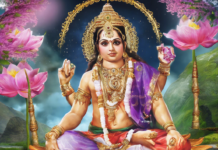Imagine stepping outside on a crisp morning, taking a deep breath of fresh air, and feeling invigorated by the cool breeze. Now, imagine that instead of fresh air, you’re met with a thick, hazy cloud that stings your eyes and burns your throat. This is smog – a noxious blend of pollutants that plagues urban areas around the world.
What is Smog?
Smog is a type of air pollution that results from the interaction of pollutants in the atmosphere. The word “smog” itself is a combination of “smoke” and “fog,” reflecting its origins in the industrial revolution when coal burning created thick smoke that mixed with fog.
Types of Smog
There are two main types of smog: photochemical smog and sulfurous smog.
-
Photochemical smog: This type of smog is formed through a series of chemical reactions involving sunlight, nitrogen oxides (NOx), volatile organic compounds (VOCs), and other pollutants. Photochemical smog is often seen in cities with high traffic levels and intense sunlight.
-
Sulfurous smog: Sulfurous smog is primarily the result of burning coal or oil at large industrial facilities and power plants, which release sulfur dioxide (SO2) into the atmosphere. Sulfurous smog is characterized by its distinctive rotten egg smell.
Causes of Smog
Smog is primarily caused by the burning of fossil fuels, industrial activities, vehicular emissions, and agricultural practices. Major contributors to smog include:
-
Vehicle Emissions: Combustion engines in cars, trucks, and other vehicles release nitrogen oxides and volatile organic compounds.
-
Industrial Activities: Factories, power plants, and refineries emit high levels of sulfur dioxide and other pollutants.
-
Agricultural Practices: The use of fertilizers and pesticides releases ammonia and other harmful chemicals into the air.
-
Residential Heating: Burning wood, coal, or other fuels for heating in homes can also contribute to smog formation.
Effects of Smog
Smog has far-reaching effects on human health, the environment, and the economy.
-
Health Effects: Breathing in smog can irritate the respiratory system, leading to coughing, wheezing, chest pain, and shortness of breath. Long-term exposure to smog has been linked to respiratory diseases, heart problems, and even premature death.
-
Environmental Impact: Smog can damage crops, forests, and bodies of water, leading to decreased agricultural productivity and biodiversity loss. It can also contribute to the formation of acid rain, which further harms ecosystems.
-
Economic Consequences: The health impacts of smog result in increased healthcare costs, lost productivity due to illness, and decreased tourism in affected areas.
Ways to Reduce Smog
To combat smog and its detrimental effects, various strategies can be implemented:
-
Reducing Emissions: Implementing stricter emission standards for vehicles, industries, and power plants can help reduce the amount of pollutants released into the atmosphere.
-
Promoting Clean Energy: Transitioning to renewable energy sources such as solar and wind power can decrease reliance on fossil fuels and lower emissions.
-
Improving Public Transportation: Encouraging the use of public transportation, cycling, and walking can reduce the number of vehicles on the road and lower emissions.
-
Planting Trees: Trees absorb pollutants and release oxygen, helping to improve air quality in urban areas.
-
Public Awareness: Educating the public about the causes and effects of smog can lead to greater support for clean air initiatives and policies.
Frequently Asked Questions (FAQs)
-
What are the main pollutants that contribute to smog formation?
Nitrogen oxides (NOx), volatile organic compounds (VOCs), sulfur dioxide (SO2), and particulate matter are the primary pollutants involved in smog formation. -
Is smog a problem only in large cities?
While smog is more prevalent in urban areas due to higher levels of traffic and industrial activities, it can also affect rural areas, especially during periods of high agricultural activity. -
Can smog be harmful to wildlife?
Yes, smog can have negative effects on wildlife by damaging habitats, reducing food sources, and causing respiratory issues in animals. -
How can I protect myself from smog exposure?
To reduce your exposure to smog, stay indoors on high pollution days, use air purifiers at home, and avoid outdoor activities during peak smog hours. -
Are children and the elderly more susceptible to the effects of smog?
Yes, children, the elderly, and individuals with pre-existing respiratory conditions are more vulnerable to the health impacts of smog due to their weakened immune systems and lung function.
In conclusion, smog is a serious environmental issue that requires collective action to address. By understanding the causes of smog, its effects, and the ways to mitigate it, we can work towards cleaner, healthier air for current and future generations.









